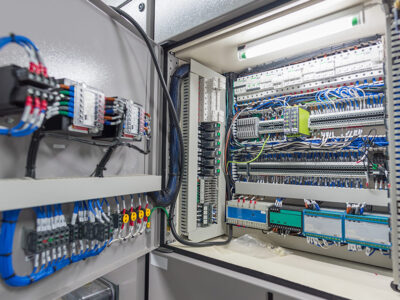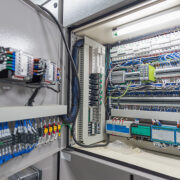
Understanding the Importance of Industrial Brakes
Industrial brakes play a crucial role in ensuring the safety and efficiency of workplaces across various industries. These brakes are designed to control and stop the movement of heavy machinery, equipment, and vehicles, preventing accidents and injuries in the workplace. By understanding the importance of industrial brakes, employers can create a safer environment for their workers and maximize operational efficiency.
The Role of Industrial Brakes in Workplace Safety
Industrial brakes are essential for maintaining workplace safety because they provide operators with the ability to control the movement and speed of machinery. These brakes help prevent accidents by allowing operators to stop or slow down equipment in emergency situations, avoiding collisions or other hazardous incidents. Whether it’s a large crane carrying heavy loads or a conveyor belt transporting materials, industrial brakes provide the necessary stopping power to ensure the safety of workers and prevent costly damage to equipment.
Furthermore, industrial brakes are designed to withstand high loads and harsh operating conditions. They are built to handle the unique demands of various industries, such as mining, construction, manufacturing, and transportation. The reliability and durability of industrial brakes are crucial factors in maintaining workplace safety, as any failure or malfunction can have serious consequences.
Maximizing Efficiency with Proper Industrial Brake Usage
While safety is the primary concern, industrial brakes also play a significant role in maximizing operational efficiency. By allowing precise control over the movement of machinery, these brakes enable operators to optimize production processes and minimize downtime. For example, in manufacturing facilities, industrial brakes help regulate the speed of assembly lines and conveyors, ensuring smooth operation and preventing bottlenecks.
Proper and efficient use of industrial brakes can also contribute to energy savings. By using brakes with adjustable torque and speed settings, operators can reduce unnecessary wear and tear on equipment and minimize energy consumption. This not only lowers operational costs but also contributes to a more sustainable workplace.
The Impact of Industrial Brakes on Productivity and Profitability
Industrial brakes have a direct impact on productivity and profitability in the workplace. By providing reliable stopping power and control, these brakes minimize downtime caused by accidents or equipment failures. This results in improved productivity and reduced costs associated with equipment repairs and maintenance.
Moreover, industrial brakes can enhance the overall efficiency of operations by enabling faster cycle times and increasing throughput. With the ability to control the acceleration and deceleration of machinery, operators can optimize production processes and meet tight deadlines more effectively. This improved efficiency translates into higher profitability for businesses.
Different Types of Industrial Brakes and Their Applications
There are several types of industrial brakes available, each designed for specific applications and operating conditions. Understanding the different types of brakes can help businesses choose the most suitable option for their specific needs.
An Introduction to Friction Brakes and Their Advantages
Friction brakes are the most common type of industrial brakes used in a wide range of applications. These brakes rely on the frictional force between two surfaces to stop or slow down machinery. They typically consist of a rotating disc or drum and a set of brake shoes or pads that clamp onto the disc or drum, generating the necessary friction to stop the movement.
Friction brakes offer several advantages, including high stopping power, precise control, and straightforward installation. They are also relatively cost-effective and require minimal maintenance compared to other brake types. Friction brakes are commonly used in industries such as automotive manufacturing, material handling, and mining.
Exploring the Benefits of Electromagnetic Brakes in Industrial Settings
Electromagnetic brakes are another popular choice for industrial applications that require rapid stopping or holding power. These brakes use an electromagnetic field to create friction and stop the movement of machinery. When power is supplied to the brake, the electromagnetic field engages, clamping the brake disc or drum and generating the necessary braking force.
The advantages of electromagnetic brakes include fast response times, high torque capacity, and precise control. They are commonly used in industries such as robotics, elevators, and cranes, where quick and precise braking is essential for safety and efficiency.
Hydraulic and Pneumatic Brakes: Which is the Right Choice for Your Worksite?
Hydraulic and pneumatic brakes use fluid or compressed air, respectively, to generate the necessary braking force. These types of brakes offer high torque capacity and are well-suited for heavy-duty applications where substantial stopping power is required.
Hydraulic brakes are commonly used in industries such as construction, mining, and agriculture, where large machinery and vehicles need reliable braking. Pneumatic brakes, on the other hand, are often used in industrial automation and manufacturing processes, where precise control and rapid response are critical.
Maintaining and Inspecting Industrial Brakes for Optimal Performance
Maintaining and regularly inspecting industrial brakes is essential to ensure optimal performance and prevent accidents or equipment failures. Proper maintenance and inspections can identify potential issues early on and help avoid costly downtime.
Best Practices for Regularly Inspecting and Testing Industrial Brakes
Regular inspections and testing of industrial brakes should be conducted according to manufacturer guidelines and industry standards. This includes checking for signs of wear and tear, inspecting brake pads or shoes for proper thickness, and examining brake components for any damage or corrosion.
Additionally, testing the performance of industrial brakes is essential to ensure they are functioning correctly. This may involve checking the braking force, response time, and any abnormal noises or vibrations during operation. Any anomalies should be addressed promptly to prevent failures or accidents.
Common Maintenance Challenges and How to Overcome Them
Maintaining industrial brakes can present challenges, especially in demanding operating environments. One common challenge is contamination, such as the accumulation of dirt, dust, or oil on brake surfaces. Regular cleaning and proper sealing can help mitigate the effects of contamination.
Another challenge is thermal issues, particularly in applications where high temperatures are present. Overheating can affect brake performance and lifespan. Proper cooling systems and selecting brakes designed for high-temperature environments can help overcome this challenge.
Proper Troubleshooting Techniques for Industrial Brakes
In the event of brake malfunctions or performance issues, proper troubleshooting techniques should be employed to identify and resolve the problem. This may involve inspecting electrical connections, hydraulic or pneumatic systems, and conducting diagnostic tests to pinpoint any faults. Consultation with brake manufacturers or certified technicians may be necessary for complex troubleshooting scenarios.
Choosing the Right Industrial Brake System for Your Needs
Choosing the right industrial brake system requires careful consideration of various factors to ensure compatibility and optimal performance in specific applications and operating conditions.
Factors to Consider When Selecting Industrial Brakes for Different Applications
When selecting industrial brakes, factors such as load capacity, stopping distance requirements, operating speed, and environmental conditions should be taken into account. For example, heavy-duty applications may require brakes with higher torque capacity, while applications with frequent starts and stops may require brakes with fast response times.
The Effects of Environmental Factors on Industrial Brake Performance
Environmental factors, such as temperature, humidity, and exposure to chemicals or corrosive substances, can affect the performance and lifespan of industrial brakes. It is essential to choose brakes that are designed to withstand the specific environmental conditions of the workplace to ensure reliable operation and longevity.
Upgrading and Retrofitting Industrial Brake Systems: Is it Worth the Investment?
In some cases, upgrading or retrofitting existing industrial brake systems may be beneficial to improve safety, efficiency, and performance. This could involve replacing outdated components with newer, more advanced technologies or integrating additional safety features to meet evolving industry standards.
However, the decision to upgrade or retrofit should be based on a thorough analysis of costs, benefits, and potential return on investment. Consultation with brake system experts or engineers can provide valuable insights to make informed decisions.
In conclusion, industrial brakes play a vital role in ensuring both safety and efficiency in workplaces across various industries. Understanding their importance, different types, proper maintenance, and selection criteria is essential for businesses seeking to create a safe working environment while maximizing productivity and profitability.
FAQ
Question: What is the role of industrial brakes in workplace safety? Answer: Industrial brakes provide operators with the ability to control the movement and speed of machinery, helping to prevent accidents and collisions in the workplace.
Question: How do industrial brakes contribute to maximizing efficiency? Answer: Industrial brakes enable operators to have precise control over the movement of machinery, optimizing production processes and minimizing downtime.
Question: What is the impact of industrial brakes on productivity and profitability? Answer: Industrial brakes minimize downtime caused by accidents or equipment failures, leading to improved productivity and reduced costs. They also enhance overall operational efficiency.
Question: What are the different types of industrial brakes and their applications? Answer: There are friction brakes, electromagnetic brakes, and hydraulic/pneumatic brakes, each with different advantages and suitable for specific industries and operating conditions.
Question: How should industrial brakes be regularly maintained and inspected? Answer: Regular maintenance and inspections are essential to ensure optimal performance and prevent accidents or equipment failures. This includes checking for wear and tear, inspecting brake pads/shoes, and testing braking force and response time.
Question: What are some common maintenance challenges for industrial brakes? Answer: Contamination and thermal issues are common challenges. Regular cleaning and proper sealing can address contamination, while selecting brakes designed for high-temperature environments can overcome thermal issues.
Question: What are the factors to consider when choosing industrial brakes? Answer: Factors such as load capacity, stopping distance requirements, operating speed, and environmental conditions should be considered when selecting industrial brakes.
Question: Is it worth upgrading or retrofitting industrial brake systems? Answer: Upgrading or retrofitting industrial brake systems can improve safety and efficiency, but a cost analysis should be conducted to determine if the investment is worthwhile. Consultation with brake system experts can provide valuable insights.











